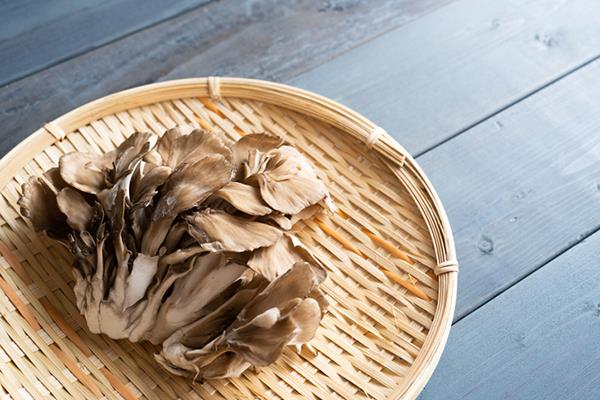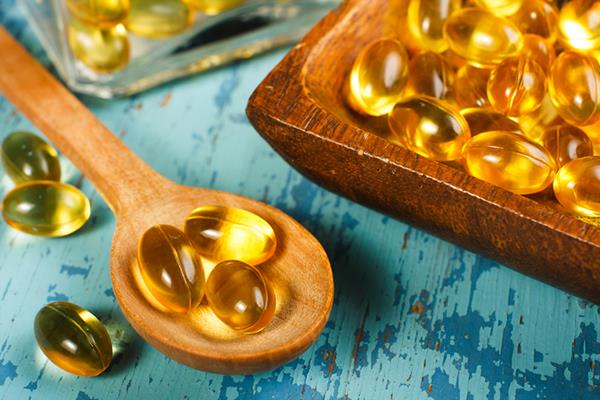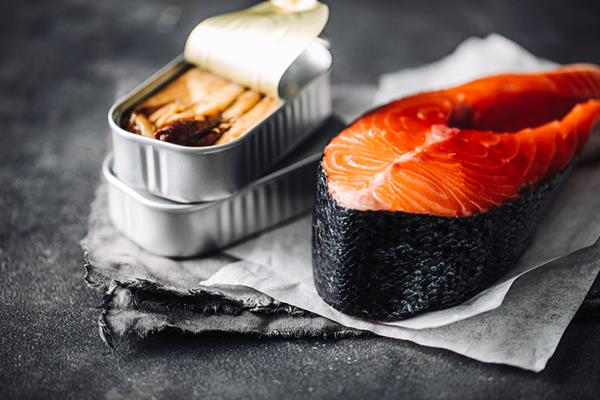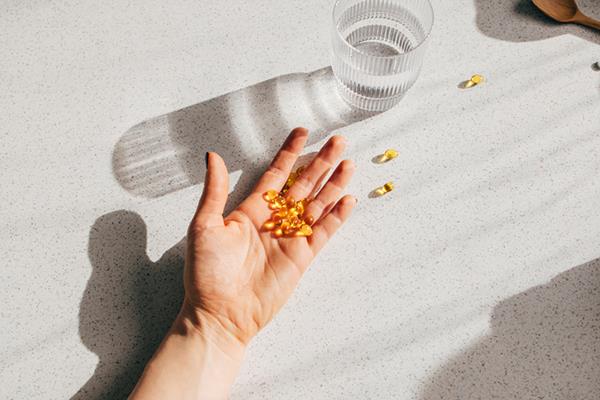Quick: Name a few foods high in vitamin D. Stumped? That’s likely because while vitamin D is an essential vitamin with plenty of benefits, it can be a little elusive.
“There aren’t a lot of good food sources of vitamin D,” says Amy Gorin, MS, RDN, a registered dietitian in the New York City area. That doesn’t mean there aren’t any — only that this vitamin isn’t ubiquitous.
What foods are high in vitamin D?
“Food sources include salmon, mackerel, maitake mushrooms, and vitamin D-fortified milk and orange juice,” Gorin explains.
Here’s a look at some of the animal- and plant-based vitamin D foods.
1. Mushrooms

Whether you’re topping your favorite protein or swapping them in for meat altogether, mushrooms are great vitamin D foods.
- 1 cup diced maitake mushrooms contains 19.7 mcg vitamin D.
- 1 cup sliced grilled portabella mushrooms (exposed to UV light) contains 15.9 mcg vitamin D. (Exposing mushrooms to sunlight boosts their vitamin D content.)
2. Cod Liver Oil

A teaspoon of cod liver oil contains 11.2 mcg vitamin D.
You’ll probably consume cod liver oil as a supplement instead of via cooking, but you can try adding it to juices and smoothies.
3. Salmon, Sardines, and Trout

Fish is a healthy protein choice, and the “fatty” varieties are also vitamin D foods.
Salmon
Three ounces of raw salmon contains 7.65 mcg vitamin D.
You’ll find two tasty salmon recipes in these quick and easy dinner recipes.
Sardines
3.75 ounces of sardines contains 4.4 mcg vitamin D.
Sardines are also a good source of iron, so use them as a healthy topping for pizzas and salads.
Trout
Three ounces of trout contains 13.5 mcg vitamin D.
How Much Vitamin D Do We Actually Need?
“Most adults need 600 IU [international units] of vitamin D per day,” Gorin says. (That’s equal to 15 micrograms.)
Adults ages 70 and older need another 33%, or 800 international units (20 mcg).
Because the foods listed above all contain more than 20 percent of the recommended daily intake (RDI) of vitamin D for adults, they are considered “excellent sources.” Here are a few other vitamin D foods:
Milk (fortified)
- 1 cup fortified skim milk contains 3 mcg vitamin D.
Soymilk (fortified)
- 1 cup fortified soy milk contains 2.9 mcg vitamin D.
Canned tuna (in water)
- 3 ounces canned tuna packed in water contains 1.7 mcg vitamin D.
Almond milk (fortified)
- 1 cup fortified almond milk contains 2.6 mcg vitamin D.
Orange juice (fortified)
- 1 cup fortified orange juice contains 2.5 mcg vitamin D.
Egg yolks
- 1 large egg yolk contains 0.9 mcg vitamin D.
Should I Supplement My Vitamin D?

Vitamin D is sometimes called the “sunshine” vitamin because our bodies can make it from sunlight. However, factors like time of year, cloud cover, and skin tone can impact how much vitamin D we convert from sunlight. (It may be hard to come by enough vitamin D in the winter.)
“It’s very difficult to get enough vitamin D from food or sunlight alone,” Gorin says. “This is why it’s a good idea to have your levels tested by your doctor to see what your baseline is. If needed, you can speak with your doctor about supplementation.”
Before taking a vitamin D supplement, you might reach for fortified milk, orange juice, or plant-based milks. (Vitamin D is a fat-soluble vitamin, and excess can accumulate in your body, so be sure to get your baseline checked.)
“Because not many foods provide a good amount of vitamin D, fortified foods can be a good option to get your fill of the vitamin,” explains Gorin. “Because vitamin D is best absorbed when paired with a fat source, I’d recommend drinking the juice with your breakfast.”
Vitamin D Foods Chart
Here’s a full ranking of vitamin D foods, according to the USDA’s Dietary Guidelines 2020-2025.
| Food |
Vitamin D (micrograms) per standard serving size* |
| Rainbow trout, freshwater |
16.125 |
| Salmon (various) |
9.58 – 14.25 |
| Light tuna, canned |
5.775 |
| Herring |
4.55 |
| Sardines, canned |
4.1 |
| Tilapia |
3.175 |
| Soy beverage (soy milk), unsweetened |
2.975 |
| Flounder |
2.95 |
| Milk, low fat (1%) |
2.925 |
| Yogurt, plain, nonfat |
2.9 |
| Yogurt, plain, low fat |
2.9 |
| Milk, fat free (skim) |
2.875 |
| Mushrooms, raw (various) |
2.85 – 27.5 |
| Almond beverage (almond milk), unsweetened |
2.675 |
| Rice beverage (rice milk), unsweetened |
2.525 |
| Kefir, plain, low fat |
2.5 |
| Orange juice, 100%, fortified |
2.5 |
| Cheese, American, low fat or fat free, fortified |
2.125 |
*Numbers may differ slightly from what’s listed above due to serving sizes.
The post Get More Vitamin D by Adding These Foods to Your Diet appeared first on BODi.
---------------------------
By: William Kang
Title: Get More Vitamin D by Adding These Foods to Your Diet
Sourced From: www.beachbodyondemand.com/blog/foods-high-in-vitamin-d
Published Date: Wed, 17 May 2023 23:47:48 +0000
Read More
 General Health and WellnessFitness and ExerciseSupplements and VitaminsPandemic NewsVideosPrivacy PolicyTerms And Conditions
General Health and WellnessFitness and ExerciseSupplements and VitaminsPandemic NewsVideosPrivacy PolicyTerms And Conditions
